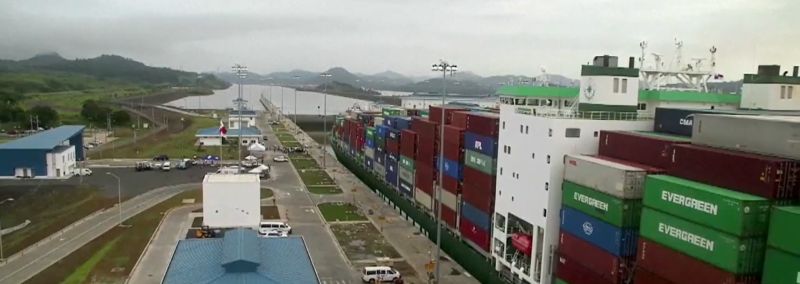 Panama, the fifth wettest country, is experiencing one of the two driest years in the country’s 143-year record. The historic drought has impacted the water levels in Gatun Lake and the Panama Canal resulting in the Canal Authority introducing ship draft restrictions and in cutting back on the number of ships allowed to transit the canal.
Panama, the fifth wettest country, is experiencing one of the two driest years in the country’s 143-year record. The historic drought has impacted the water levels in Gatun Lake and the Panama Canal resulting in the Canal Authority introducing ship draft restrictions and in cutting back on the number of ships allowed to transit the canal.
More than 200 ships are stuck on both sides of the Panama Canal after authorities capped the number of crossings because of the drought. The entrances on both sides of the Panama Canal are jammed with some ships backed up for more than 20 days.
The number of daily transits through the canal has been capped at 32 by the authorities in a bid to conserve water. Restrictions for the number of vessels passing through the canal has been extended until September 2.
Panama is set to lose $200 million in revenue from the delays and it could cause a spike in US grocery and parcel prices as extra fees are hiked on to shipping costs.
More than 14,000 ships transited the canal in 2022. Container ships are the most common users of the Panama Canal and transport more than 40% of consumer goods traded between Northeast Asia and the U.S. East Coast.
Reuters reports that the naturally occurring El Nino climate pattern associated with warmer-than-usual water in the central and eastern tropical Pacific Ocean is contributing to Panama’s drought.
The area around the canal is experiencing one of the two driest years in the country’s 143 years of keeping records, data from the canal authority and the Smithsonian Tropical Research Institute (STRI) showed. Rainfall measurements around the area are 30-50% below normal.
Water levels in Gatun Lake, the rainfall-fed principal reservoir that floats ships through the Panama Canal’s lock system, have remained below normal despite accumulation from the current rainy season.
A potential early start to Panama’s dry season and hotter-than-average temperatures typical of major El Nino events in the country could increase evaporation from Gatun Lake and result in near-record low water levels by March or April 2024, said STRI’s Steven Paton.
“It’s the perfect storm of events,” said Paton, who has monitored rain patterns in the Central American country for more than three decades.
The frequency of major El Nino drying patterns has risen significantly during the last 25 years of the canal’s 109-year history. If that continues, “it will be increasingly difficult for (the Panama Canal) to guarantee that the largest ships are going to be able to get through,” Paton said.
Traffic jam in Panama canal as drought leaves 200 ships stranded

All that money they spent enlarging the locks for bigger vessels, did they not consider the implications of global warming?